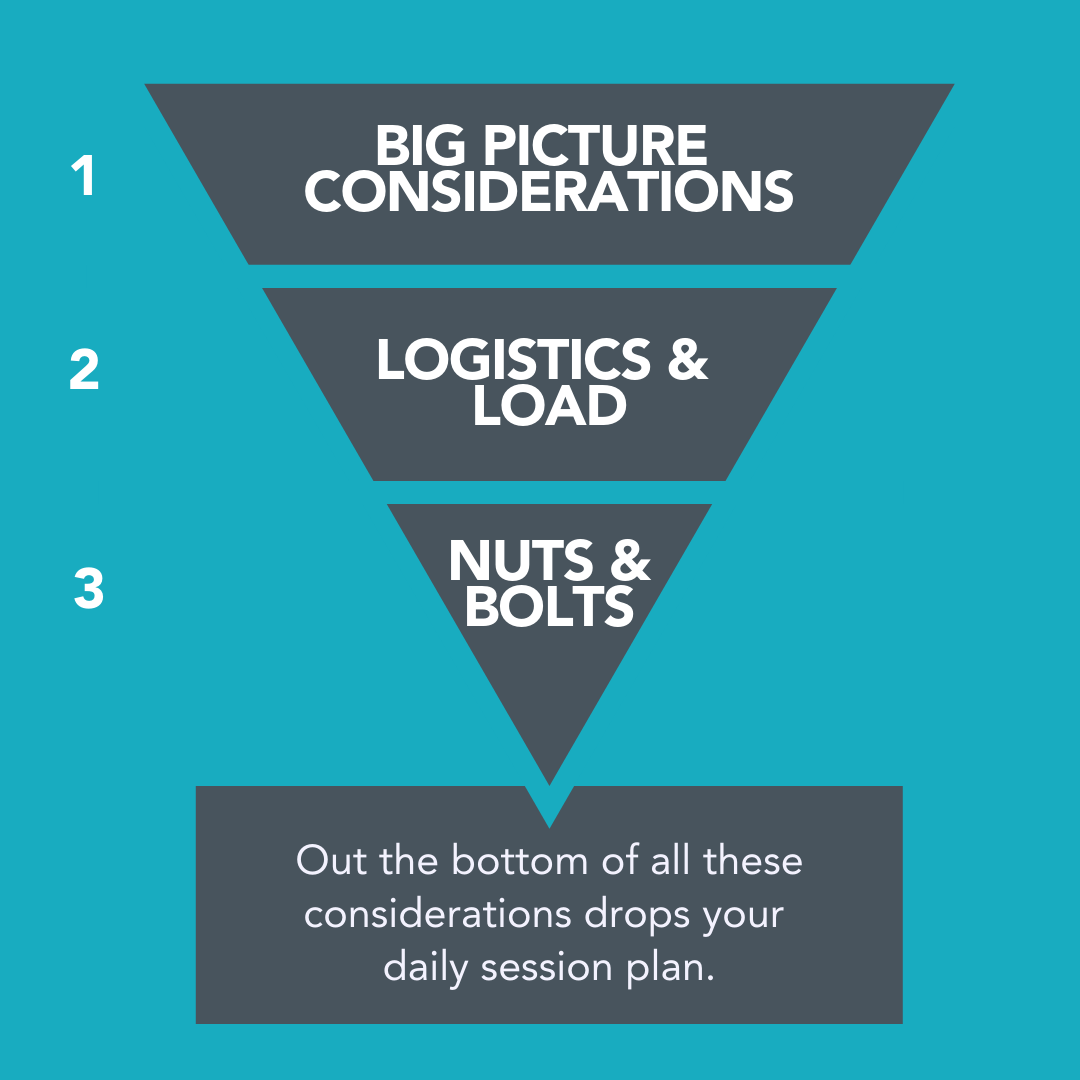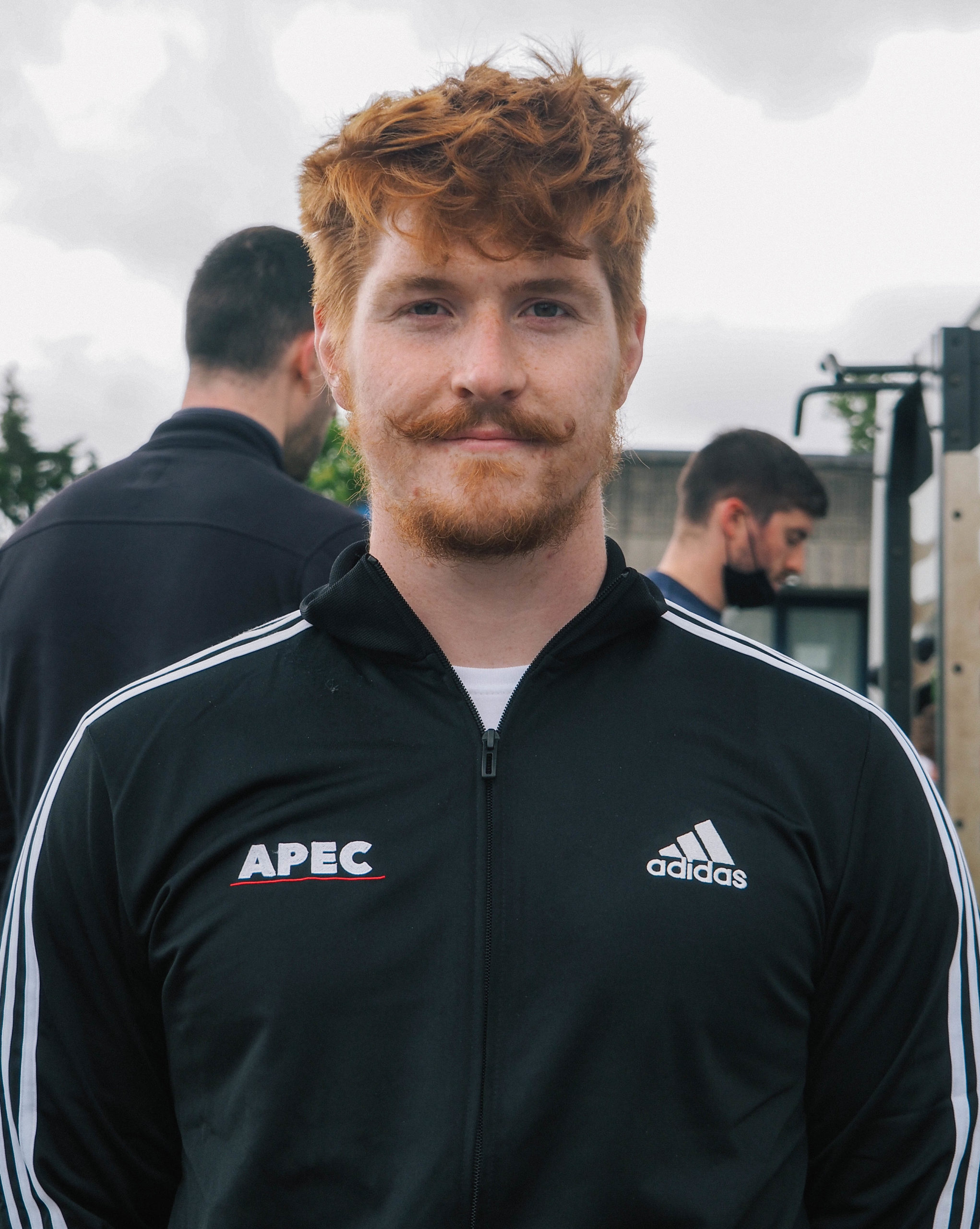How To Plan A Session

- Uncategorized
As a coach, you should be aware of the need to tailor sessions for our specific clients and their needs. We are now going to give you a framework of the considerations used to plan a workout.
All of the different variables are interlinked and will have an effect on each other and the decisions you make will influence how you organise the sessions you design.

BIG PICTURE CONSIDERATIONS
First, we are going to mention some of the larger variables to consider about your client before you plan an individual session such as the client’s age, training age, injury status, goals and previous injury history.
These are all important factors that need to be considered in your long term programming and periodisation.
This information will all be gathered in your needs analysis and needs to be updated as you work with the client, as their goals, training and biological age may change.
It is also important that you know where sessions fit within your macro and mesocycles. If the main goal of training is to improve movement efficiency, the secondary goal is to increase strength and the tertiary goal is to improve body composition, these should be reflected in the session plan.
For a client with these goals, you would need to consider exercises that have a large range of motion and prioritise working on the neurological control and strength in these movements to increase their movement efficiency.
Additionally, these same exercises might assist in the secondary goal of increasing strength in the client.
LOGISTICS & LOAD
The second set of considerations identified in the funnel relates to the logistical and load management challenges of planning a session.
Logistical challenges would include things such as how much time a client has, what equipment you have and what space you have in the gym, home or class.
On the other hand, the load management considerations relate to how much exercise the client has recently completed, how many high-intensity sessions and the total volume of their training over the mesocycle.
As well as this, you should consider whether you need to vary the type of session the client is doing or stay consistent with the design of the session.
Variation can come in the form of changing exercises, changing exercise order, manipulating rest periods or changing the sets and reps of a session.
The organisation of your session is an important factor based on the goal of the session and the goal of the training block. Do you use the PAA system, circuits, intervals or sport-specific?
For more information on organising a session and using the PAA system, check out our previous blog here.
NUTS AND BOLTS
Once you know the goal for the day’s session, the organisation of the sessions and the logistics, you can pick the exercises for the session and the exercise order.
It is best to start with compound movements and larger muscle groups first. The main purpose behind this is that they require the most amount of effort and you should want to maximise the return from them before your client becomes fatigued.
In the PAA system, this is considered a ‘primary lift’ which is then followed by an ‘assistance lift’ which can also be a large muscle group or a compound lift.
In the accessory section towards the end of a session. you can add in variations and focus on smaller muscle groups or lifts which isolate a specific muscle group.
Once you have your exercises, you then choose the volume for each exercise (sets x reps x load) and the volume for the total session.
At this time as well, you have to include rest periods between sets and between exercises. If the goal is strength, you have longer rest periods (2-5 minutes) as opposed to hypertrophy where rest periods are shorter (<2minutes).
It is important for coaches to bare all these considerations listed in mind when designing sessions as they may change from week to week for a client.
About Author:

Alex Porter is a tutor at APEC. He has a BSc in Sports Science and S&C Coach.